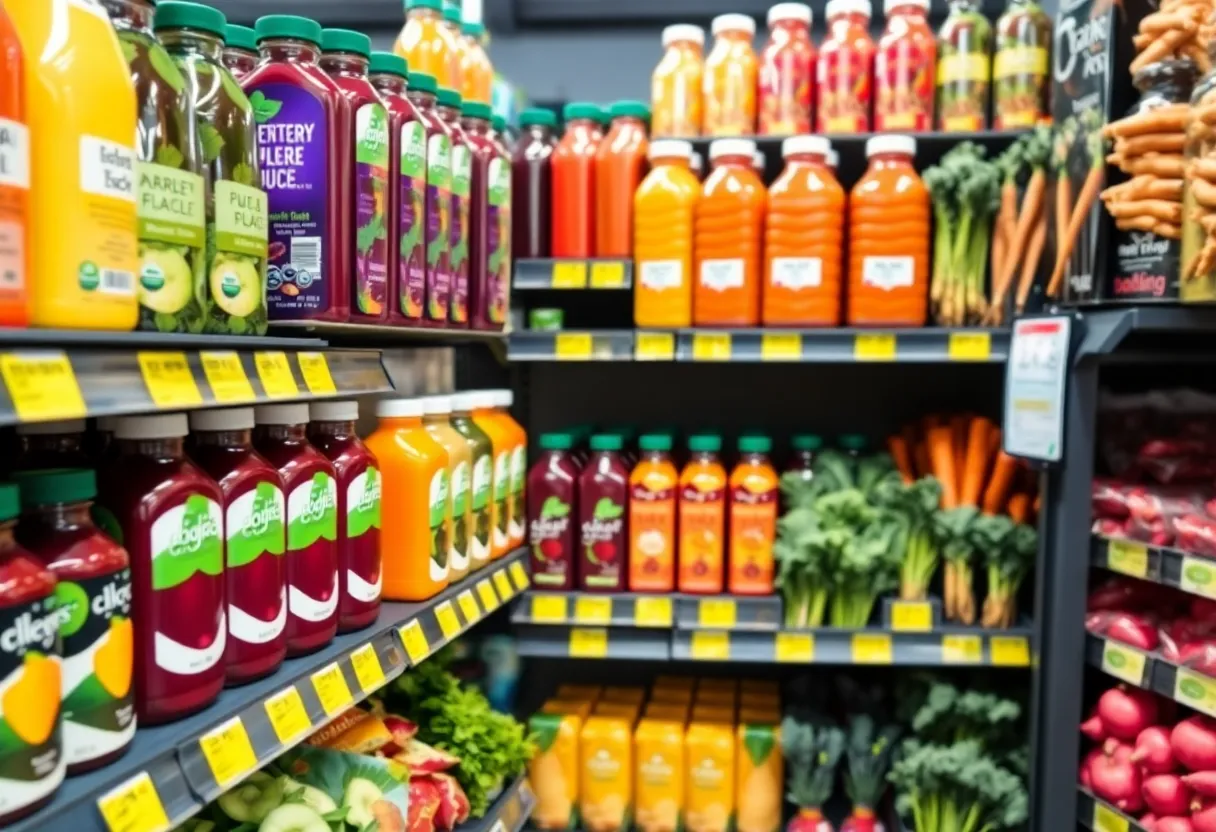FDA Announces Phase-Out of Synthetic Dyes by 2026


A variety of natural food colorings showcased in a grocery store, highlighting the shift from synthetic to healthier ingredients.
News Summary
The FDA has revealed plans to phase out petroleum-based synthetic dyes from U.S. food products by the end of 2026. This initiative aims to promote healthier eating habits, targeting six specific dyes known for potential health risks. Major food companies are expected to collaborate on transitioning to natural alternatives, while advocacy groups express concerns about the voluntary nature of this phase-out. The move marks a significant step toward establishing national standards for food safety and improving public health.
FDA Takes Bold Steps to Phase Out Synthetic Dyes by 2026
In a move that’s sure to impact your next grocery run, the FDA announced on April 22, 2025, their plan to phase out all petroleum-based synthetic dyes from the U.S. food supply by the end of next year. This latest development is part of a larger initiative led by the Health and Human Services Secretary aimed at promoting healthier eating habits across America.
What Does This Mean for Consumers?
With over 50 years of allowing American children to consume what has been described as a “toxic soup of synthetic chemicals” — the FDA is finally taking action. This isn’t just a haphazard decision; it’s a carefully considered stride toward improving the health of future generations.
The focus will be on six specific synthetic dyes: Red No. 40, Yellow No. 5, Yellow No. 6, Blue No. 1, Blue No. 2, and Green No. 3. Additionally, the FDA is accelerating the removal of Red No. 3, pushing for its phase-out to also be completed by the end of next year, a full two years ahead of previously set schedules.
How Are Food Companies Responding?
At this point, there isn’t a formal agreement between the FDA and food manufacturers. Instead, the organizations are operating on a “mutual understanding” that suggests cooperation. Major players in the food industry like PepsiCo, General Mills, Mars, and WK Kellogg are expected to make significant changes but exact plans are still under discussion.
With this announcement, the FDA aims to establish a national standard, creating clear guidelines and timelines for companies to switch to natural alternatives. Proposed substitutes include vibrant, wholesome ingredients like watermelon juice, beet juice, and carrot juice. Not only are these colors more appealing, but they could also lead to a healthier food supply.
What About Health Risks?
Concerns over synthetic food dyes aren’t new. Research has linked these colors to various health issues, including potential hyperactivity and even cancer risks in animals. Yet, it’s important to note that conclusive studies on humans are still lacking. As consumer awareness grows, several companies, like Kraft Heinz, have already reformed products to eliminate synthetic colors, often prompted by popular demand.
Advocacy Groups Chime In
While the FDA’s initiative has been welcomed with open arms by many food safety advocacy groups, there is also concern regarding the voluntary nature of this phase-out plan. The fear is that without stricter regulations, the process may drag on longer than necessary, allowing harmful dyes to linger on store shelves.
Moreover, Robert F. Kennedy Jr.’s campaign emphasizes the urgency in eliminating petroleum-based additives, asserting that consumers should not unknowingly ingest these questionable chemicals.
Looking Ahead
Interesting enough, over half of the United States has already initiated some level of legislation to regulate food dyes at the state level due to these health concerns. Executives from major food companies have been engaging in discussions with the FDA regarding how these changes might affect consumer perceptions and product formulations, hinting at a significant evolution in the industry.
However, natural dyes, while arguably safer and more appealing, come with their own challenges. They tend to be less cost-effective and less stable than their synthetic counterparts, sparking concerns among consumers about potential price hikes. Can you imagine paying more for that colorful, enticing cereal at breakfast?
Conclusion
As we move forward into this new era of food regulation, the phase-out of synthetic dyes is just the beginning. The FDA’s collaborative approach with the food industry aims to encourage healthier choices without compromising on the products we love. So, keep an eye on those ingredient labels, because changes are on the way!
Deeper Dive: News & Info About This Topic
- CNN
- Wikipedia: Food Colorings
- CNBC
- Google Search: food dye ban news
- USA Today
- Google Scholar: food dyes health risks
- CBS News
- Encyclopedia Britannica: synthetic food dyes
- New York Post
- Google News: food dye regulations
- Forbes
Recent Posts
Governor Hobbs Vetoes Antisemitism Teaching Ban in Arizona
News Summary Arizona Governor Katie Hobbs has vetoed House Bill 2867, which aimed to ban…
Arizona Passes Bipartisan $17.6 Billion Budget to Prevent Shutdown
News Summary Arizona's House of Representatives has successfully passed a bipartisan budget package worth $17.6…
Arizona Faces Significant Job Losses Amid Economic Challenges
News Summary Arizona is confronting substantial workforce challenges with over 450 layoffs at a key…
Arizona Faces Job Losses and Lawsuit Amid Federal Funding Cuts
News Summary Arizona's Department of Economic Security is set to lay off 467 employees due…
Phoenix Plans Freeway Restrictions This Weekend
News Summary This weekend, multiple freeway restrictions will affect north and northwest Phoenix due to…
Phoenix Faces Urgent Call for Improved Crosswalk Safety Amid Rising Traffic Fatalities
News Summary Phoenix is confronting a significant rise in traffic fatalities, prompting demands for enhanced…